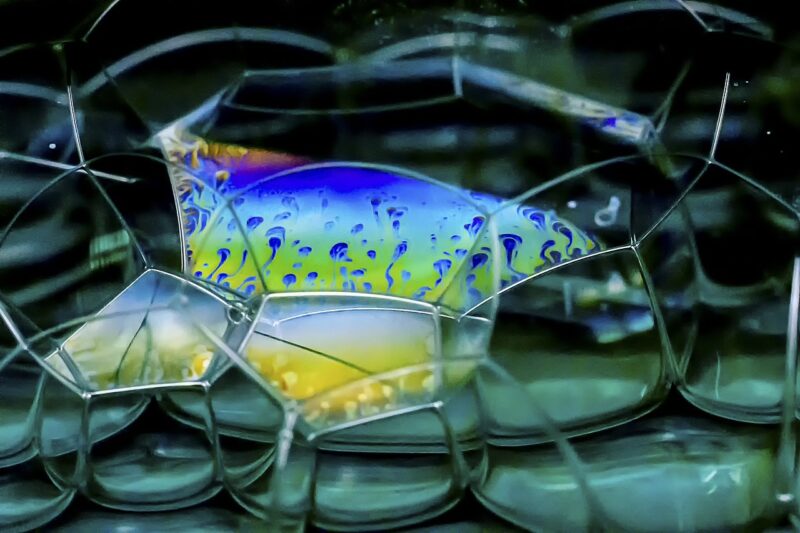
Soap bubbles are not just delightful objects of play; they are fascinating phenomena rooted in the principles of physics—particularly the concept of surface tension. Understanding why soap bubbles are round requires a dive into the science behind them. In this article, we will explore surface tension and the unique properties of soap bubbles that lead to their spherical shape.
1. What is Surface Tension?
Surface tension is a physical property that arises from the cohesive forces between liquid molecules. Atoms and molecules are attracted to each other, leading to various phenomena depending on how particles interact at a surface. Think of it as a thin elastic membrane on the surface of a liquid that allows it to resist external force.
The molecules at the surface of a liquid experience a different environment than those in the bulk; they are pulled inward by the molecules beneath them, resulting in a net force that creates tension at the surface. This effect is observable in many everyday scenarios, from water striders walking on ponds to the shape of raindrops.
2. How Does Soap Change Surface Tension?
When soap is added to water, it disrupts the cohesive forces present between water molecules. Soap molecules have two distinct ends: a hydrophilic (water-attracting) end and a hydrophobic (water-repelling) end. When soap is mixed with water, the molecules arrange themselves in a way that the hydrophobic tails aim away from the water while the hydrophilic heads remain submerged.
This arrangement decreases the overall surface tension of the water because the soap molecules replace some of the water molecules at the surface, which are more strongly attracted to each other. Lower surface tension allows bubbles to form more easily and makes them larger compared to pure water bubbles.
3. Why Are Soap Bubbles Spherical?
One of the primary reasons soap bubbles are round is due to the way forces balance out within the bubble. When a bubble forms, the surface tension tries to minimize the surface area of the bubble for a given volume. The geometric shape that offers the minimum surface area for any given volume is a sphere.
This principle of minimizing surface area leads to the ideal rounded shape of bubbles. When air is trapped inside a soap film, the film naturally pulls to create a sphere. Indeed, if you observe bubbles of various sizes, they will all take on a round shape unless acted upon by external forces or constraints.
4. Factors Affecting Bubble Shape
The spherical shape of a soap bubble can also be influenced by several external factors:
- Gravity: In larger bubbles, gravity can distort the spherical shape, causing them to elongate as they hang.
- Air Pressure: Changes in outward or inward air pressure can affect bubble shape, causing them to deform.
- Surfaces: When bubbles form against surfaces or in specific geometrical constraints, they can take on shapes that deviate from spherical.
5. The Lifecycle of a Soap Bubble
Understanding the lifecycle of a soap bubble helps illustrate the dynamics of surface tension:
- Formation: Bubbles are formed when air is trapped in a film of soap solution. As the film stretches, surface tension pulls it into a spherical shape.
- Growth: As more air is introduced or as the soap solution clings to surrounding moisture, the bubble size may increase. This can lead to merging with smaller bubbles, further enhancing its shape and volume.
- Bursting: Eventually, the bubble will burst when either the film becomes too thin or external forces overwhelm the surface tension. This collapse occurs rapidly, often producing a sound due to the rapid implosion of the bubble.
6. Real-World Applications of Surface Tension
Beyond the playful allure of soap bubbles, the principles of surface tension have various real-world applications:
- Medical Applications: Understanding surface tension is crucial in fields such as medicine, where it impacts the behavior of liquids in the human body, like blood and mucus.
- Inkjet Printing: Surface tension helps govern how ink droplets form and properly adhere to surfaces, affecting print quality.
- Detergency: The way surfactants in cleaning products interact with water and dirt is guided by the principles of surface tension, making them effective cleaners.
Conclusion
The charming roundness of soap bubbles is a striking example of physics at play. Through the balance of forces and the fascinating properties of surface tension, we witness the creation of these delicate, ephemeral orbs that bring joy and wonder. By understanding the science behind soap bubbles, we unveil a small yet profound aspect of the natural world around us, celebrating both beauty and science with every iridescent bubble that floats by.
In summary, the spherical shape of soap bubbles, a manifestation of surface tension, is a vivid reminder of the interplay between beauty and natural laws. The next time you catch sight of a bubble drifting through the air, take a moment to appreciate the science and art that merge in that simple yet breathtaking sphere.








